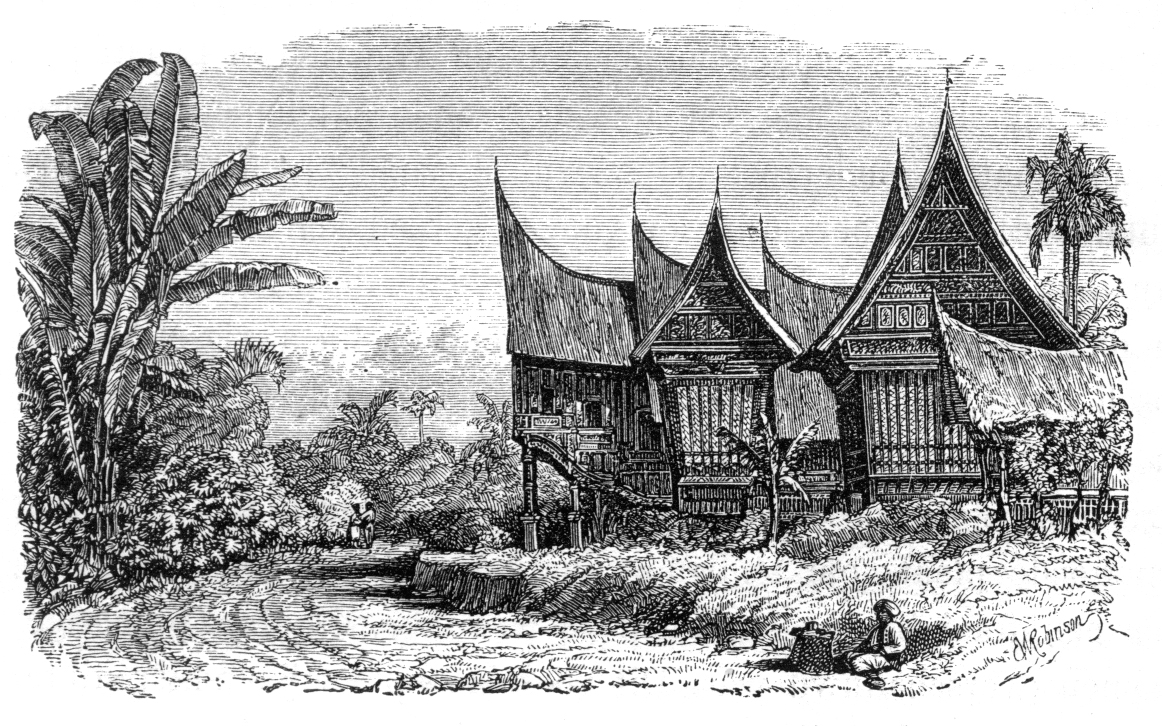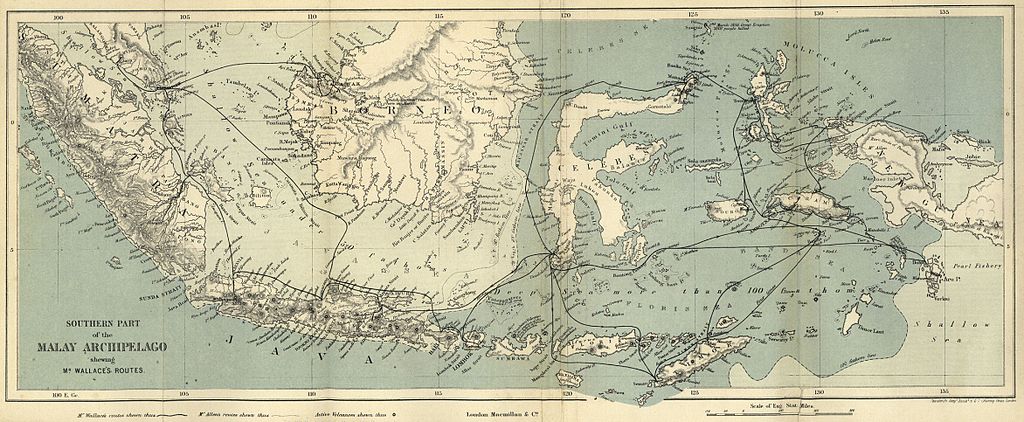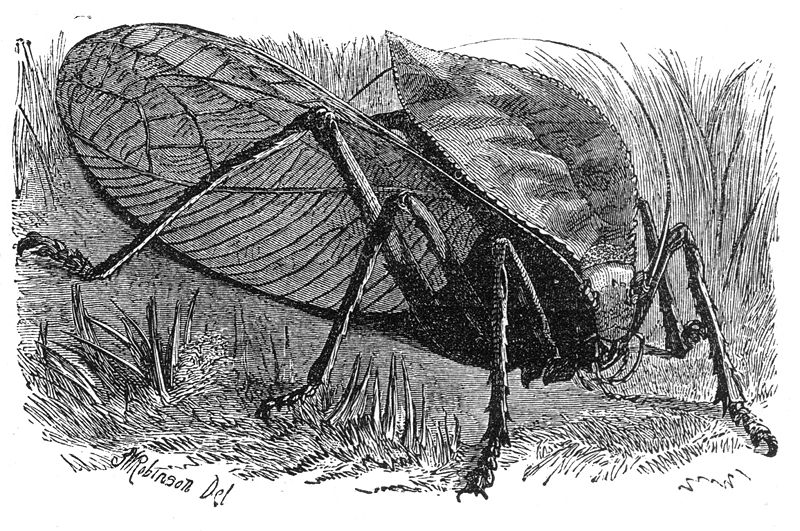The Malay Archipelago


The Malay Archipelago is a book by the British naturalist Alfred Russel Wallace that chronicles his scientific exploration, during the eight-year period 1854 to 1862, of the southern portion of the Malay Archipelago including Malaysia, Singapore, the islands of Indonesia, then known as the Dutch East Indies, and the island of New Guinea. It was published in two volumes in 1869, delayed by Wallace's ill health and the work needed to describe the many specimens he brought home. The book went through ten editions in the nineteenth century; it has been reprinted many times since, and has been translated into at least eight languages.
The book described each island that he visited in turn, giving a detailed account of its physical and human geography, its volcanoes, and the variety of animals of plants that he found and collected. At the same time, he describes his experiences, the difficulties of travel, and the help he received from the different peoples that he met. The preface notes that he travelled over 14,000 miles and collected 125,660 natural history specimens, mostly of insects though also with thousands of molluscs, birds, mammals and reptiles.
The Malay Archipelago attracted many reviews, with interest from scientific, geographic, church and general periodicals. Reviewers noted and sometimes disagreed with various of his theories, especially the division of fauna and flora along what soon became known as the Wallace line, natural selection and uniformitarianism. Nearly all agreed that he had provided an interesting and comprehensive account of the geography, natural history, and peoples of the archipelago, which was little known to their readers at the time, and that he had collected an astonishing number of specimens. The book is much cited, and is Wallace's most successful, both commercially and as a piece of literature.
In 1847, Wallace and his friend Henry Walter Bates, both in their early twenties,Bates was 22, Wallace was 24. agreed that they would jointly make a collecting trip to the Amazon "towards solving the problem of origin of species";Mallet, Jim. "Henry Walter Bates". University College London. Retrieved December 11, 2012. Charles Darwin's book on the Origin of Species was not published until 11 years later, in 1859, itself precipitated by a famous letter from Wallace which described the theory in outline.Shoumatoff, Alex (22 August 1988). "A Critic at Large, Henry Walter Bates". New Yorker. They had been inspired by reading the American entomologist William Henry Edwards's pioneering 1847 book A Voyage Up the River Amazon, with a residency at Pará.Edwards, 1847. Bates stayed in the Amazons for 11 years, going on to write The Naturalist on the River Amazons (1863); Wallace, ill with fever, went home in 1852 with thousands of specimens, some for science and some for sale. The ship and his collection were destroyed by fire at sea near the Guianas. Rather than giving up, Wallace wrote about the Amazon in both prose and poetry, and then set sail again, this time for the Malay Archipelago.
The Malay Archipelago was first published in 1869 in two volumes by Macmillan (London), and the same year in one volume by Harper & Brothers (New York). Wallace returned to England in 1862, but explains in the Preface that given the large quantity of specimens and his poor health after his stay in the tropics, it took a long time. He noted that he could at once have printed his notes and journals, but felt that doing that would have been disappointing and unhelpful. Instead, therefore, he waited until he had published papers on his discoveries, and other scientists had described and named as new species some 2,000 of his beetles (Coleoptera), and over 900 Hymenoptera including 200 new species of ant.Wallace, 1869. pp. vii–ix. The book went through 10 editions, with the last published in 1890.

The preface summarizes Wallace’s travels, the thousands of specimens he collected, and some of the results from their analysis after his return to England. In the preface he notes that he travelled over 14,000 miles and collected 125,660 specimens, mostly of insects: 83,200 beetles, 13,100 butterflies and moths, 13,400 other insects. He also returned to England 7,500 "shells" (such as molluscs), 8,050 birds, 310 mammals and 100 reptiles.
The book is dedicated to Charles Darwin, but as Wallace explains in the preface, he has chosen to avoid discussing the evolutionary implications of his discoveries. Instead he confines himself to the "interesting facts of the problem, whose solution is to be found in the principles developed by Mr. Darwin", so from a scientific point of view, the book is largely a descriptive natural history. This modesty belies the fact that while in Sarawak in 1855 Wallace wrote the paper On the Law which has Regulated the Introduction of New Species, concluding with the evolutionary "Sarawak Law", "Every species has come into existence coincident both in space and time with a closely allied species", three years before he fatefully wrote to Darwin proposing the concept of natural selection.
The first chapter describes the physical geography and geology of the islands with particular attention to the role of volcanoes and earthquakes. It also discusses the overall pattern of the flora and fauna including the fact that the islands can be divided, by what would eventually become known as the Wallace line, into two parts, those whose animals are more closely related to those of Asia and those whose fauna is closer to that of Australia.
The following chapters describe in detail the places Wallace visited. Wallace includes numerous observations on the people, their languages, ways of living, and social organization, as well as on the plants and animals found in each location. He talks about the biogeographic patterns he observes and their implications for natural history, in terms both of the movement of species and of the geologic history of the region. He also narrates some of his personal experiences during his travels. The final chapter is an overview of the ethnic, linguistic, and cultural divisions among the people who live in the region and speculation about what such divisions might indicate about their history.

The illustrations are, according to the Preface, made from Wallace's own sketches, photographs, or specimens. Wallace thanks Walter and Henry Woodbury for some photographs of scenery and native people. He acknowledges William Wilson Saunders and Mr Pascoe for horned flies and very rare Longhorn beetles: all the rest were from his own enormous collection.